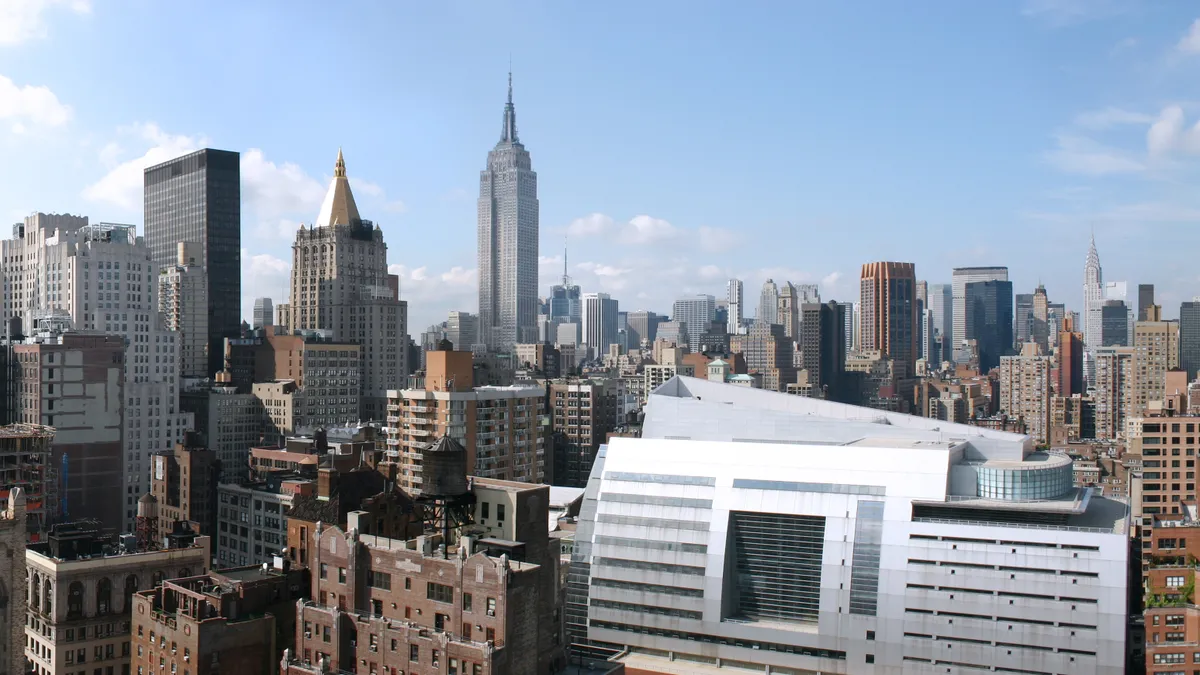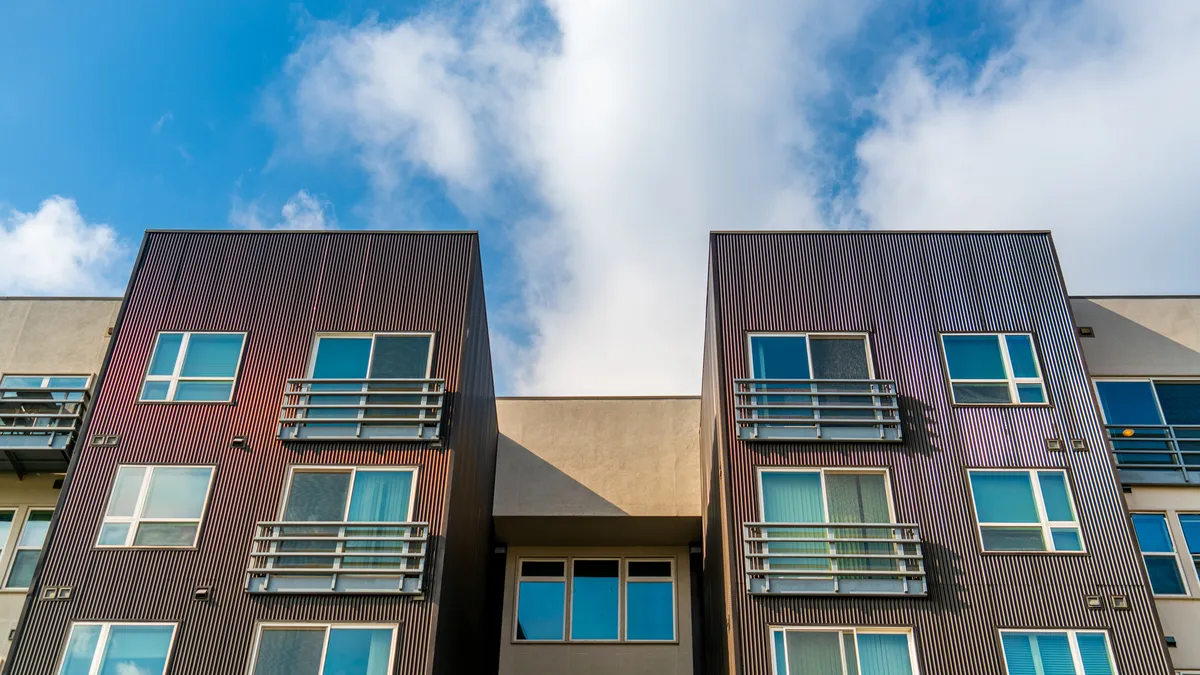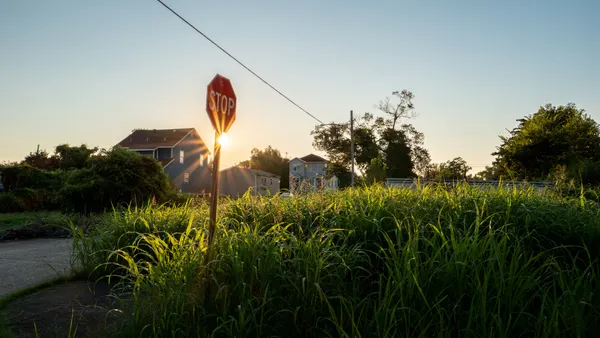New York City and San Francisco were the poster children for pandemic urban flight in 2020. As residents moved out of the two pricey coastal markets, landlords grappled with ballooning vacancies and rent decreases.
New York saw one-bedroom rents fall 17.6% from March 2020 to January 2021, according to apartment listing service Zumper. In San Francisco, rents in one-bedroom apartments fell 22.6% from November 2019 to November 2020.
Now, two years later, San Francisco and New York are rebounding, but they’re not recovering at the same rates. In New York, rents have jumped and occupancies have tightened so much that there are now bidding wars for rentals in the city. In San Francisco, rents have risen but are still below pre-pandemic levels.
Big Apple bounceback
In New York, bidders are jockeying to get into empty apartments as rents rose 26% for one-bedrooms and 29.4% for two-bedrooms from February 2021 to February 2022, according to Zumper.
"The rental market in New York City is absolutely white-hot," said Michael P. Feldman, co-founder and CEO of New York-based property management firm Choice New York Cos. "It's just incredible."
On Chicago-based REIT Equity Residential's February earnings call, chief operating officer Michael Manelis said he expects the New York market's turnaround to continue.
"We expect New York to be our best-performing market in 2022 with same-store revenue growth of approximately 13% despite some expected pressure from new supply on the Jersey waterfront and Brooklyn," Manelis said.
Feldman says the New York recovery has been underway for a while as younger adults moved back into the city seeking to socialize, trailing the peaks and valleys of COVID-19 by a month or two. Then, as cases dipped, people felt more confident to lease apartments.
"COVID cases dip and, within a month, you see the increase," Feldman said. "It's a direct correlation. People feel like it’s getting better."
Bay Area blues
While San Francisco has seen rent growth increase over the past year, it hasn't been enough to offset the dramatic losses in 2020. "The sites that are really struggling the most there are in the urban core," said Vanessa Siebern, senior vice president at Folsom, California-based FPI Management, the fourth largest property manager in the country. "That is where we're seeing slower recovery. In those urban core markets, we're definitely not at pre-pandemic rents."
Rents for one-bedroom apartments have risen 10.6% in the city, while prices for two bedrooms have jumped 13.4% from February 2021 to February 2022, according to Zumper. While that is notable, they haven't passed pre-pandemic marks.
In EQR's portfolio, downtown apartments in San Francisco are 96% occupied, but the company does not yet see a lot of pricing power. It expects same-store revenue growth of around 7% in 2022, but it is still the only market in its portfolio where rents haven't passed pre-pandemic levels.
"You have signs of that demand returning in there," Manelis said on the earnings call. "You just don't have quite enough of it to get you that pricing power that you need to fully recapture everything."
While urban and tech areas suffered, other markets like Sacramento have flourished over the last couple of years. In many cases, these areas thrived because of the influx of people leaving the Bay Area.
"People didn't have to live in the urban core and report to an office," Siebern said. "So they were moving to areas that offered lower rent and a better quality of life."
Click here to sign up to receive multifamily and apartment news like this article in your inbox every weekday.











